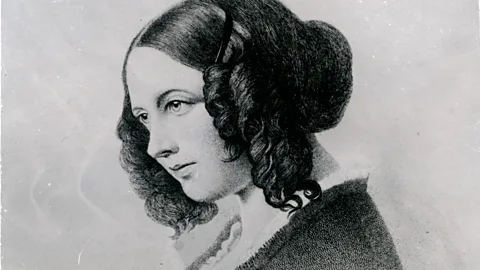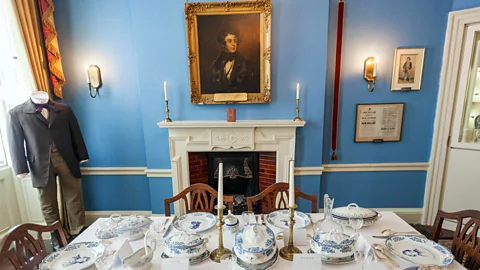The forgotten wife of Charles Dickens

As the wife of such a star, Catherine began to be overlooked. Meanwhile, while she was as happy as her husband at first, her multiple pregnancies – from which she barely got the chance to recover before getting pregnant again – began to take their toll on her health, energy and their marriage.
Now, for more than a century, Catherine has been marginalised and misremembered as a dull, frumpy wife. Even the sole Dickens biopic ever to have been made by the film industry focused not on Catherine, but on Ellen Ternan, Dickens’s mistress (a relationship that was ultimately the reason he separated from Catherine).
But the real story of Catherine is that of a fun-loving young woman who, as the wife of an international celebrity, travelled widely and had the opportunity to see and experience things that most women of her era and social status did not. She and Charles were very keen amateur actors, for example. Catherine not only performed in shows at home, but on stage in both the United States and Canada.
Another of Catherine’s achievements? Publishing a book. When I researched it, I was infuriated to discover how many people – even respected academics – have claimed that it was written by Charles.
This view is intensely patronising, implying as it does that Catherine couldn’t possibly have had the intelligence to write a book. But it is also extraordinary to claim that Charles would have willingly added to his already punishing writing schedule only to publish a book under a female pseudonym – at a time when most female authors were being forced to write under masculine pen names in order to be published.
 Steve Vidler/Alamy
Steve Vidler/AlamyCatherine’s book is entitled What Shall We Have for Dinner? A guide for young wives more than a recipe book, it advises on household tasks and producing menus for up to 18 people. In essence, Catherine was the first Mrs Beeton – a decade and a half before the actual Mrs Beeton published her now-iconic cookbook.
Now, visitors to the Charles Dickens Museum have the chance to discover all of this – and the vibrant, witty and interesting woman who was ‘the other Dickens’.
The Other Dickens is open until 20 November 2016.
Lucinda Hawksley’s new book Charles Dickens and his Circle is published by the National Portrait Gallery in the UK and the US.
This story is a part of BBC Britain – a series focused on exploring this extraordinary island, one story at a time. Readers outside of the UK can see every BBC Britain story by heading to the Britain homepage; you also can see our latest stories by following us on Facebook and Twitter.
If you liked this story, sign up for the weekly bbc.com features newsletter, called “If You Only Read 6 Things This Week”. A handpicked selection of stories from BBC Future, Earth, Culture, Capital, Travel and Autos, delivered to your inbox every Friday.
The Vintage News
·
Follow
ooSntpdsre 0buml984Sart6mcg10eef 33ac1e9i g01i6at2iltp30i:5m ·
She bore ten children — and buried three with her own hands. She crossed oceans beside him, endured the storms of his fame and failures, and kept a turbulent household alive.
And yet Catherine Hogarth — wife of Charles Dickens — was cast aside, maligned, and erased.
Dickens, celebrated as a genius, painted her as “fat, lazy, jealous, and dull.” He aired their private anguish in public, publishing a letter that turned him into the victim. The world wept for him. Few spared a tear for her.
But who would not stumble after ten pregnancies? Who would not break beneath the grief of burying children? Catherine was no weakling. She endured with fierce resilience.
Their marriage did not collapse from her faults, but because Dickens fell for a younger actress, Ellen Ternan. Divorce was scandalous in Victorian England, so Catherine was branded the problem. Dickens even built a wall inside their home to divide her from the family.
At last, Catherine put on her hat, stepped outside, and never returned. In leaving, she lost her children, her home, her place in society.
Near the end of her life, she asked only for one thing: that Dickens’s early love letters be published — proof that she had once been cherished. Even that wish was denied.
But her story endures. Catherine Dickens was never a burden. She was a survivor.
